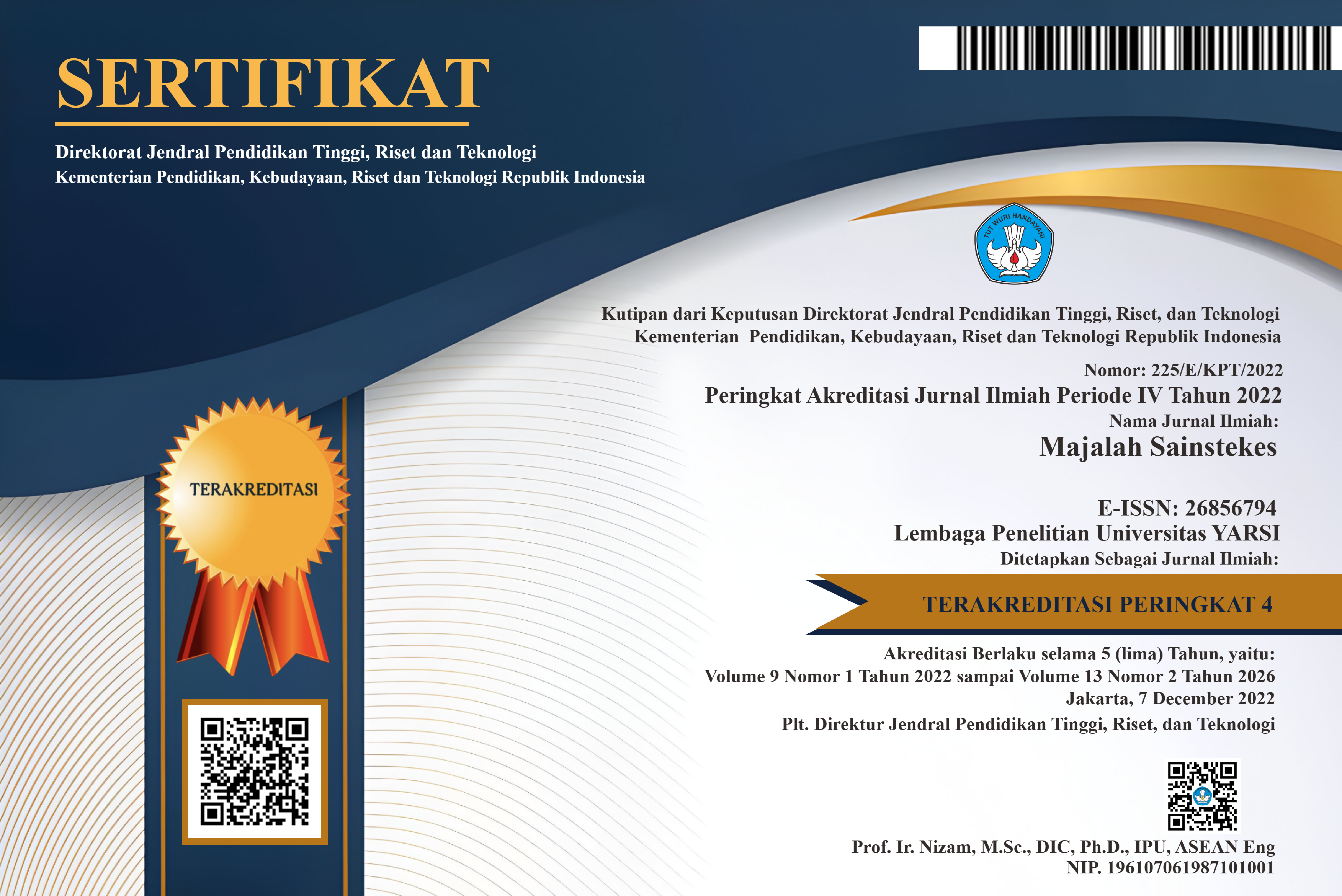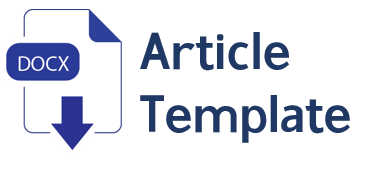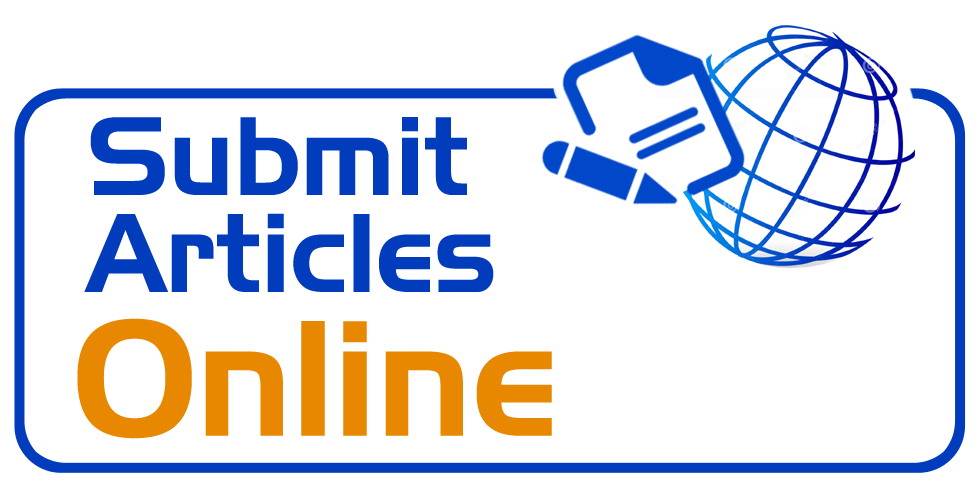Pengaruh Profitabilitas dan Leverage terhadap Harga Saham Perusahaan Manufaktur di Bursa Efek Indonesia
Keywords:
Profitability, leverage, stock priceAbstract
This study aimed to determine the relationship between managerial ownership, leverage, and profitability to the stock prices of manufacturing companies listed on the Stock Exchange for the period 2015 to 2017. Profitability is proxied by Return on Equity (ROE), while leverage is proxied by Debt to Equity Ratio (DER). The stock price applied was the closing rate of the year-end stock. Sampling was done by using purposive sampling method. The subject of the study was 30 manufacturing companies with a total of 90 observations. The data analysis utilised multiple regression analysis with the help of the SPSS program. Based on the results of the study, it was found that the profitability had a significant effect on stock prices, and leverage did not affect stock prices. Together, profitability and leverage did not have a significant effect on stock prices. Thus, the company must pay more attention to the profitability of the business in order to maintain a good price of the stock and to attract investors.
References
Nidia Zuraya. Pertumbuhan Manufaktur Indonesia Tertinggi di ASEAN. https://www.republika.co.id/berita/ekonomi/korporasi/18/02/12/p40ezo383-pertumbuhan-manufaktur-indonesia-tertinggi-di-asean [12/02/18]
Spence, M. 1973. Job Market Signalling. The Quarterly journal of Economics.
Brigham, E., & Joel F,H. 2001. Manajemen Keuangan. Jakarta: Erlangga.
Koewn, A, J., Martin, J, D., Petty J, W., & Scott, D,F. 2011. Manajemen Keuangan. Jakarta: Indeks.
Bodie, Kane, & Marcus. 2014. Manajemen Portofolio dan Investasi (Investment). Jakarta: Salemba Empat.
Halim, A. 2005. Analisis Investasi Edisi Kedua. Jakarta: Salemba Empat.
Tandelilin, E. 2010. Pasar Modal Manajemen Portofolio dan Investasi. Yogyakarta: PT Kanisius.
Martono, & Harjito, A. 2007. Manajemen Keuangan. Edisi pertama, cetakan keenam. Yogyakarta: Ekonisia.
Ikatan Akuntan Indonesia. 2015. Standar Akuntansi Keuangan. Jakarta: Salemba Empat.
Sofyan S, H. 2011. Analisis Kritis atas Laporan Keuangan. Jakarta: Rajawali Pers.
Hery. 2017. Analisis Laporan Keuangan. Jakarta: PT Grasindo.
Mardiyanto, & Jardono. 2009. Inti Sari Manajemen Keuangan. Jakarta: GramediaWidiasarana Indonesia.
Sartono, A. 2008. Manajemen Keuangan Teori dan Aplikasi. Yogyakarta: BPFE.
Fakhrudin, & Hendy, M. 2008. Istilah Pasar Modal A-Z. Jakarta: Elex Media Komputindo.
Hanafi. 2004. Manajemen Keuangan. Yogyakarta: BPFE.
Ariyanti, S., Topowijono, & Sulasmiyati, S. 2016. Pengaruh Profitabilitas dan Leverage Terhadap Harga Saham (Studi Pada Perusahaan Konstruksi dan Bangunan yang Terdaftar di Bursa Efek Indonesia Periode 2011-2014). Jurnal Administrasi Bisnis (JAB) Vol. 35 No. 2.
Johan, R., & Septariani, D. 2017. Pengaruh Tingkat Leverage, Return on Equity, dan Current Ratio Terhadap Harga Saham Perusahaan Feed Animal Husbandry Di Bursa Efek Indonesia. Journal of Applied Business and Economics Vol.3 No.3.
Munira, M., Merawati, E.E, & Astuti, S.B. 2018. Pengaruh ROE dan DER Terhadap Harga Saham Perusahaan Kertas Di Bursa Efek Indonesia. Journal of Applied Business and Economics Vol.4 No.3.
Saprudin, S. 2019. Pengaruh Kepemilikan Manajerial, Leverage dan Profitabilitas Terhadap Harga Saham Perusahaan Manufaktur. Journal of Information System, Applied, Management< Accounting and Research Vol.3 No.3, 19-26
Sugiyono. 2013. Metode Penelitian Kuantitatif Kualitatif dan R&D. Bandung: Alfabeta.
Arikunto, Suharsimi. 2010. Prosedur Penelitian: Suatu Pendekatan Praktek. Jakarta: Rineka Cipta.
Sanusi, A. 2017. Metode Penelitian Bisnis. Jakarta: Salemba Empat.
Ghozali, I. 2013. Aplikasi Analisis Multivariate dengan Program IBM SPSS 21 Update PLS Regresi. Semarang: Universitas Diponegoro.
Fahmi, Irham 2013. Analisis Laporan Keuangan. Bandung: Alfabeta.
Walsh, Ciaran. 2004. Key Management Ratios: Master the Management Metrics that Drive and Control Your Business, edisi ketiga. Jakarta: Erlangga.

 Saprudin Saprudin
Saprudin Saprudin












